Editorial
Too young to marry
More effort is needed to raise awareness and educate young men, women and parents.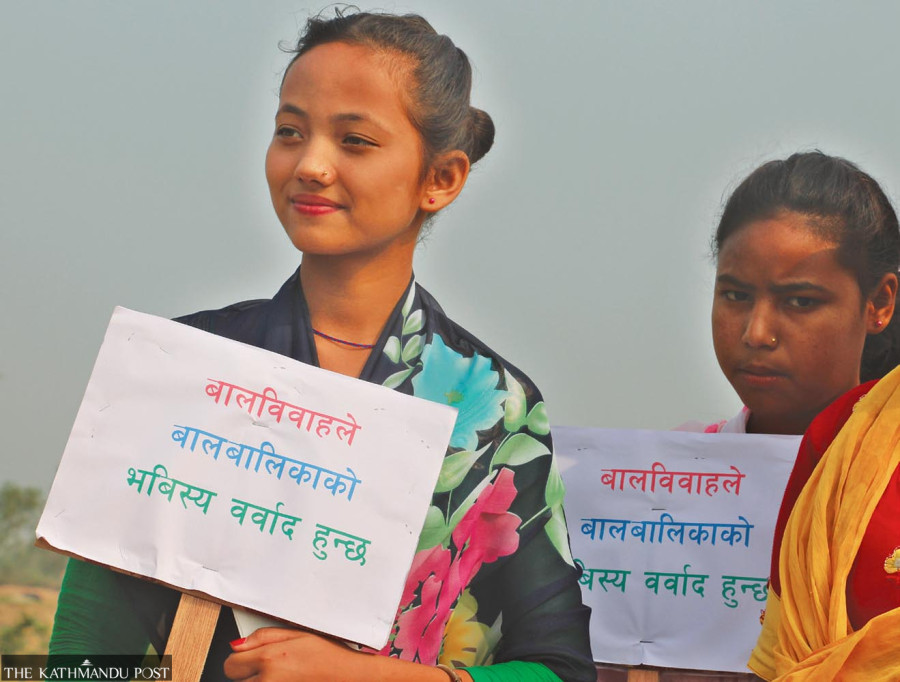
The continued prevalence of child marriage is a matter of great shame for Nepal. The country has the third highest rate of early marriage in Asia and the second highest (40 percent) in South Asia after only Bangladesh (59 percent). We easily surpass India (27 percent), Pakistan (21 percent) and Bhutan (26 percent). According to the Nepal Demographic and Health Survey 2022, around 14 percent of girls aged 14-19 years became pregnant early from these marriages. Among them, 10 percent gave live birth, while two percent experienced pregnancy loss. Those working for child rights see a direct link between economic conditions and child marriage, while the practice is also affected by culture and gender norms, level of awareness, lack of access to healthcare and illiteracy. They also believe Covid-19 induced lockdown, parental deaths, school closures and dropouts made things worse. Further, self-initiated child love marriages are rampant as ever.
The government acknowledges the effects of child marriage. Nepal banned the practice in 1963 and has a national strategy to eliminate it too. The country has committed to ending it by 2030 as part of the Sustainable Development Goals. The legal age for marriage for both men and women has been increased to 20 years in the National Civil Code Act 2017, putting Nepal among countries with the highest legal age bars for marriage in the world. National and international organisations and agencies are also working in collaboration with the government to address the problem. Yet such efforts have still fallen short. The child marriage rate is 21 percent in Karnali province, 20 percent in Madhesh and 8 percent in Bagmati. In Makwanpur district, it is a whopping 59.7 percent. Child marriage is also prevalent in urban and rural areas, slums and the outskirts of big cities, including Kathmandu. So where are our efforts to end this social evil going wrong?
Often the parents who marry off their daughters too soon or the teenagers who elope are not fully aware of the consequences of child marriage. As a result, girls lose their childhood innocence to take up unnecessary marriage burdens. It also leads to further complications such as early childbirth. Education becomes a distant dream, destroying their potential. It systematically robs them of their human rights, disempowers them, and puts them at high risk of violence.
This calls for extra efforts to raise awareness and educate young men, women and parents, beginning from the grassroots. Local governments could go door-to-door and conduct social media campaigns to make people realise the mental, physical, legal and educational effects of early marriages. The next step is to empower girls to enable them to make good decisions. The Nepal Demographic and Health Survey suggests that young women between 14 and 19 years with no education are more likely to conceive than those with at least secondary level education. Scholarship initiatives and allowances for young girls can perhaps help them envision a better future for themselves, and deter them from underage marriage.
It is difficult to change entrenched patriarchal mindsets. Even today, girls are seen as a burden to their families. But it is not an impossible task as well. Constant monitoring and evaluation of “child marriage-free” communities and concerted efforts of schools, local level bodies, parents and other concerned authorities can make a difference. As will economic incentives for parents and girls from low-income families. Again, there is no magic bullet. It is rather a matter of making incremental but continued progress.




 18.12°C Kathmandu
18.12°C Kathmandu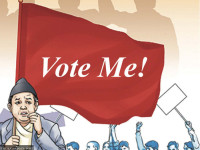
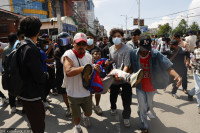
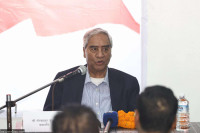
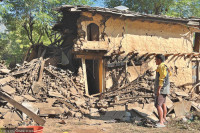









%20(1).jpg&w=300&height=200)

